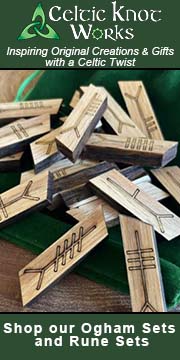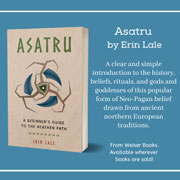
Recently a kindred member went to Odin. Jan was exceptionally young to die. It was not his legal last name, but among us he went by Odinsson. I asked Odin if he is with him and he is.
In late March, I went to his wake at his favorite pub. There were several prominent local pagans there. There were also many members of his family and community other than just the pagans and heathens. I made several social media posts over the course of the event, starting with the Irish coffee. I remembered when Jan brought his huge fryer to my house for a post ritual feast and made lumpia from his family recipe. I remembered him standing in my kitchen working at the counter and looking up in wonder and delight when I and the folk dance group went by in the hearth room doing a dance where we clapped and turned in unison, and his wife Stephanie joined us and learned some dances. I mentioned some other good times we’d had, and listened to the others tell about their good times. Near the end of the evening, some local pagans and I attempted a rendition of Finnegan’s Wake with some of the words changed, changing it to Odinsson’s Wake.
...

















